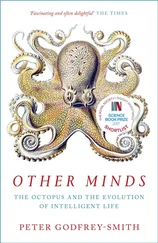Crete itself seems to have been conquered by peripheral Mycenae. In Classical civilization the core area Ionian states led by Athens were conquered by the semi peripheral Dorian states Sparta and Thebes, and the whole Greek-speaking world was then conquered by more peripheral Macedonia. Ultimately the whole of Classical civilization was conquered by fully peripheral Rome. In the New World the two isolated maize civilizations seem to provide a similar pattern. In Mesoamerica the core Mayan cities of Yucatan and Guatemala seem to have been overcome by the semi peripheral Toltecs and these, in turn, by the fully peripheral Aztecs of highland Mexico. In the Andes region the core area seems to have been along the coast and in the northern highlands of Peru. These cultures were submerged by a number of more peripheral cultures of which the most successful was the Tiahuanaco from the southern highlands of Peru. And finally, at a late date, not a century before Pizarro, the whole Andean civilization was conquered by the fully peripheral Incas from the forbidding central highlands.
In the Far East and Middle East the same sequence can be discerned. The core area of Sinic civilization was in the Huang Ho Valley. This area was conquered by Chou about 1000 B.C. and by semiperipheral Ch'in from the mountains of Shensi eight centuries later (221 B.C.). The whole of Sinic society was then brought into a single universal empire by the Han dynasty from its southern periphery (202 B.C.— A.D. 220). The Sinic civilization was destroyed by Hunnish nomad invaders before A.D. 400, and a new civilization, which we call Chinese, began to rise from the wreckage along its southern frontier. The core of this society seems to have been south of the Yangtze River. This core came under a single political rule as early as 700 under the T'ang dynasty. Wider areas were added by successive dynasties of which the Yuan or Mongols were so remote that they can be regarded neither as peripheral nor even as Chinese (12601368); the Ming (1368-1644) were of southern Chinese (and thus peripheral) origin; and the final universal empire of the Manchu (1644-1912) was from the peripheral north, Manchuria, with its original seat of power at Mukden.
The history of the Middle East provides similar evidence. We cannot speak with any assurance about the Indic civilization, but it seems likely that its earliest origins were in the lower valley (Sind) and are to be seen in the excavations at Chandu-Daro, while later it moved northward into the Punjab (upper valley) and found its universal empire in the originally peripheral Harappa area. After the destruction of this culture by the Aryan invaders from the northwest, the successor Hindu civilization began to arise (late second millennium B.C.) in the Ganges Valley. The core area of this new civilization fell under the political control of the local Maurya (ca. 540-184 B.C.) and Gupta (ca. 320-535) dynasties. Then, as Hindu culture spread over the whole Indian subcontinent, political dominance shifted to peripheral powers such as the Gurjara-Prathihara dynasty (ca. 740-1036), originating from Central Asiatic pastoral invaders, and a series of Moslem dynasties, mostly Turkish, at Delhi (after 1266), culminating in the universal empire of the Moguls (1526-1857).
In the Islamic civilization a similar pattern seems to have occurred. The core area of this civilization is to be found in western Arabia. As its culture spread over most of western Asia and northern Africa, political domination fell to increasingly peripheral dynasties: the Ommiad Caliphate, of Arabic origin, ruled from Damascus during much of its period (661-750), while its successor, the Abbaside Caliphate, ruled from Bagdad (750-ca. 930). The Seljuk Turks ruled briefly (1050-1110) from Persia and were ultimately succeeded by the universal empire of the Ottoman Turks with its center in Anatolia (1300-1922).
The victory of more peripheral states over less peripheral states during Stage 4 of any civilization seems so well established that it is worthwhile to seek the reasons for it. A number of these can be mentioned. In the first place, as a general rule, material culture diffuses more easily than nonmaterial culture, so that peripheral areas tend to become more materialistic than less peripheral areas; while the latter spend much of their time, wealth, energy, and attention on religion, philosophy, art, or literature, the former spend a much greater proportion of these resources on military, political, and economic matters. Therefore, peripheral areas are more likely to win victories. This contrast is quite clear between, let us say, Sumerians and Assyrians, between Ionians and Dorians, between Greeks and Latins, between Mayas and Aztecs, or even between Europeans and Americans.
A second reason for the victories of more peripheral states arises from the fact that the process of evolution is slightly earlier in more central areas than in peripheral ones. Thus the central areas have already passed on to Stage 4 and may even have achieved a premature dress rehearsal of Stage 5 (with the achievement of a single core empire) while peripheral areas are still in a relatively vigorous Stage 3. Generally speaking, military victory is more likely to go to an area or state in Stage 3 than to one in any later stage, because the later stages (and the more central areas) are more harassed by class conflicts and are more paralyzed by the inertia and obstruction of institutions. Core areas generally have been ravaged for a longer period of imperialist wars. The combination of these obstacles gives the inhabitants of a core area a kind of world-weariness (sometimes called a "failure of nerve") that is in sharp contrast to their own earlier attitudes or to those of their more peripheral rivals. Accordingly, the task of creating a universal empire is likely to be left to such rivals.
It should be noted that in some cases, such as Egypt, Crete, or Russia, a single political unit has ruled over the civilization from its early history. This generally arises in civilizations whose instrument of expansion is a socialist state. In such a case imperialist wars are not so prevalent a characteristic of Stage 4, and the achievement of a single political unit (universal empire) is not one of the chief characteristics of that stage. As a result, the stage may last a shorter time and cannot be so easily demarcated from earlier and later stages as can be done in civilizations where imperialist war and achievement of a universal empire are two of the most prominent marks of the stage. Absence of these items does not indicate absence of the stage, which is marked by its other, less easily observed, characteristics, such as decreasing rate of expansion, growing class conflicts, declining democracy, dying science, decreasing inventiveness, and growing irrationality.
These characteristics and the commonly observed achievement of political domination by a single (peripheral) state bring the civilization to Stage 5, the Stage of Universal Empire.
When a universal empire is established in a civilization, the society enters upon a "golden age." At least this is what it seems to the periods that follow it. Such a golden age is a period of peace and of relative prosperity. Peace arises from the absence of any competing political units within the area of the civilization itself, and from the remoteness or even absence of struggles with other societies outside. Prosperity arises from the ending of internal belligerent destruction, the reduction of internal trade barriers, the establishment of a common system of weights, measures, and coinage, and from the extensive government spending associated with the establishment of a universal empire. But this appearance of prosperity is deceptive. Little real economic expansion is possible because no real instrument of expansion exists. New inventions are rare, and real economic investment is lacking. The vested interests have triumphed and are living off their capital, building unproductive and blatant monuments like the Pyramids, the "Hanging Gardens of Babylon," the Colosseum, or (as premature examples) Hitler's Chancellery and the Victor Emmanuel Memorial. The masses of the people in such an empire live from the waste of these nonproductive expenditures. The golden age is really the glow of overripeness, and soon decline begins. When it becomes evident, we pass from Stage 5 (Universal Empire) to Stage 6 (Decay).
Читать дальше










